Wisteria is one of the most beloved flowers in Japan, announcing the arrival of spring with its elegant, cascading blooms and sweet fragrance.
In this article, we’ll dive into the basic facts about wisteria, its deep connection to Japanese culture, and introduce some of the best places to enjoy it!

My grandparents had a huge wisteria tree in their garden, and every spring it would bloom with the most magnificent flowers! It was truly a breathtaking sight.
What Is Wisteria?
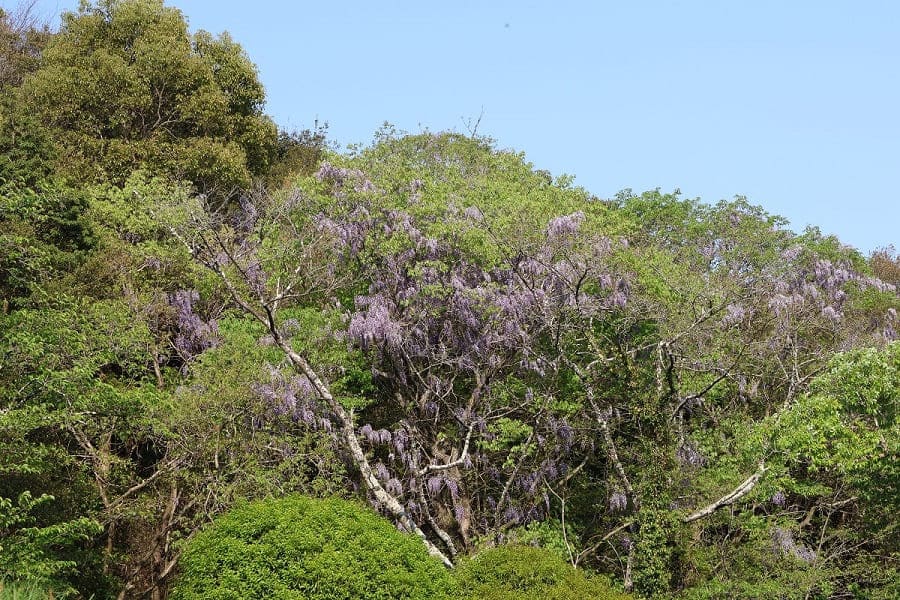
Wisteria (known as “fuji” in Japanese) is a type of woody, climbing vine belonging to the pea family.
It is native to Japan and can be found naturally growing in the mountains and fields of Honshu, Shikoku, and Kyushu.
Wisteria typically blooms from late April to early May, with its beautiful clusters releasing a sweet scent into the air.
Wisteria is also known for its incredible longevity — some wisteria plants are said to be over 1,000 years old!
Because of this, it has become a symbol of longevity and good fortune in Japanese culture.
The Special Place of Wisteria in Japanese Culture
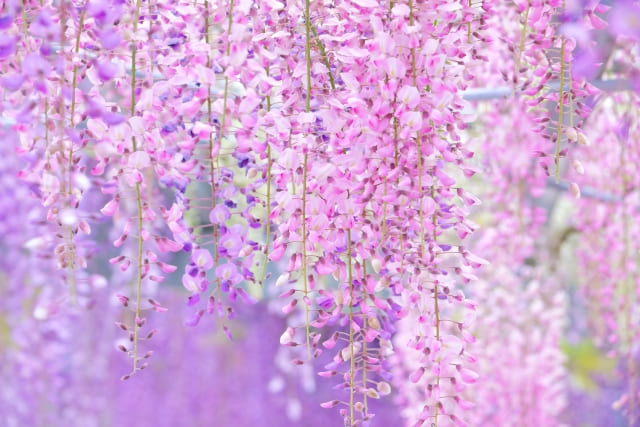
Wisteria has long been cherished in Japan as a symbol of elegance and delicacy.
It appears in Manyoshu, Japan’s oldest anthology of poetry, where 28 poems reference wisteria.
During the Heian period, the powerful Fujiwara clan (whose name includes the character for “wisteria”) elevated the flower’s status even further.
The soft purple “wisteria color” became regarded as one of the most noble and prestigious hues.
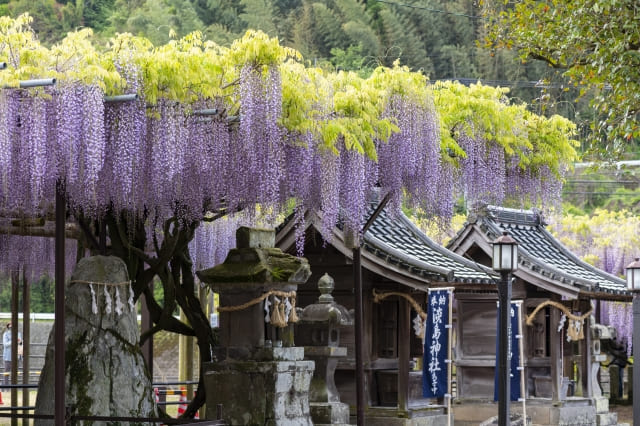

Thanks to the influence of Saint Shinran, who was connected to the Fujiwara clan, many temples in Japan began planting wisteria.
Interestingly, the pronunciation of “fuji (藤)” (wisteria) also sounds like “fushi(不死)” (meaning “immortality”), leading to associations with longevity and good fortune.
However, some people once viewed it as a bad omen because “fuji(不治)” could also suggest “incurable disease.”
This duality captures the subtle depth of traditional Japanese beliefs.
Wisteria and Demon Slayer
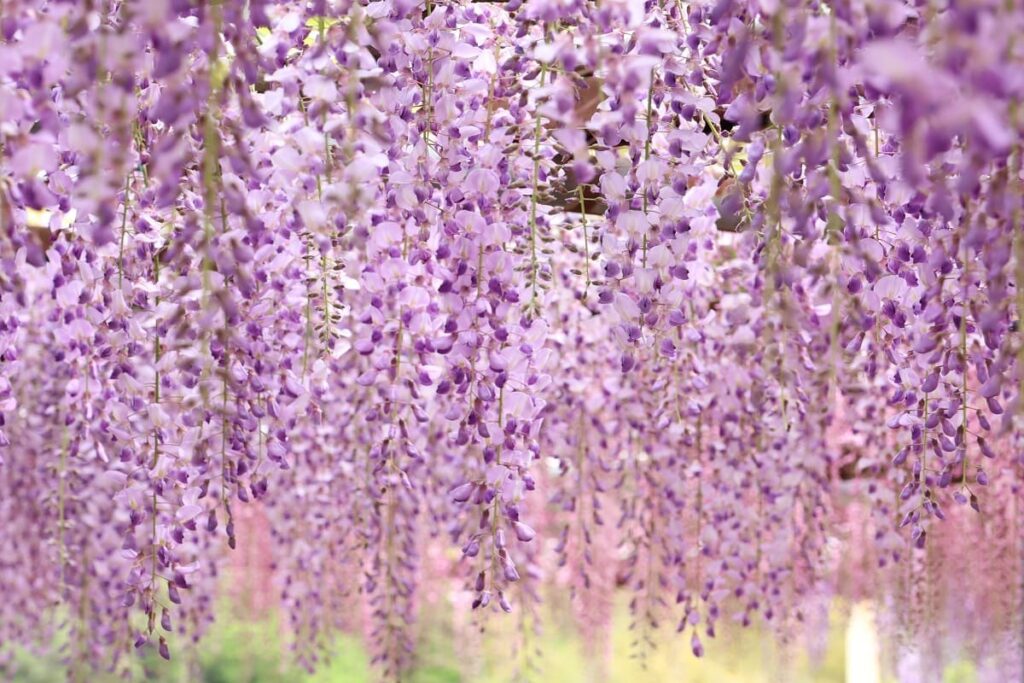
For many people abroad, the first time they heard of wisteria in a cultural context might have been through the hit manga and anime series Demon Slayer (Kimetsu no Yaiba).
In the story, wisteria flowers repel demons, serving as a powerful form of protection.
This idea has roots in Japanese folklore — wisteria belongs to the pea family (Mame-ka/マメ科), and “mametsu (魔滅)” were traditionally thought to ward off evil.
In Japanese culture, wisteria’s fragrance is also said to invite good fortune and drive away bad spirits.

The wisteria scenes in Demon Slayer were absolutely beautiful!
The Beauty of Wisteria Arbors
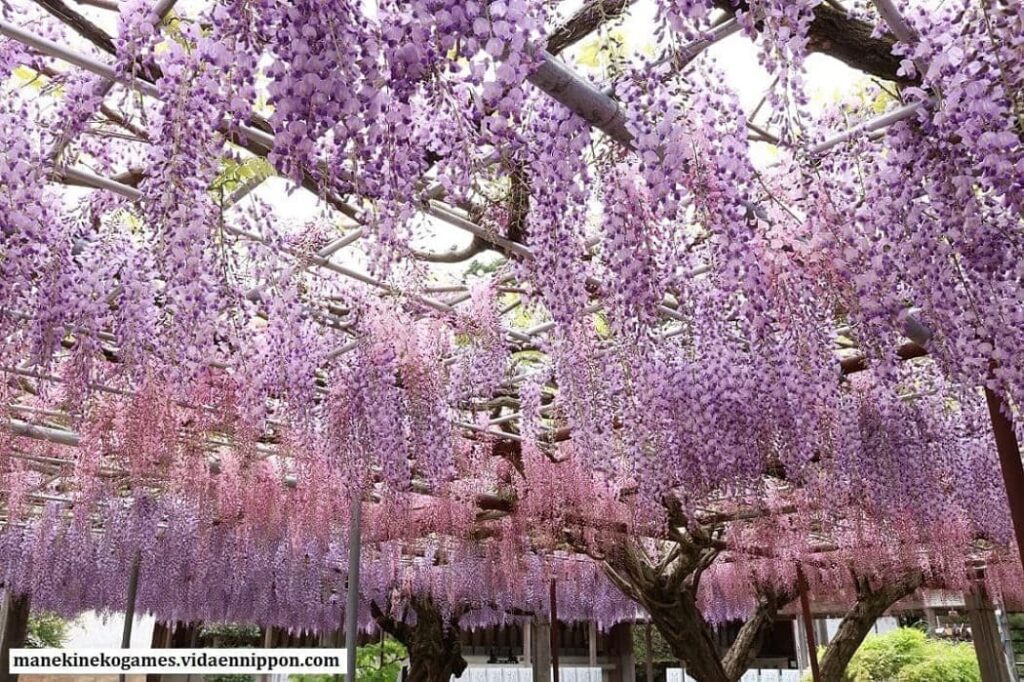
One of the most enchanting ways to experience wisteria is through “wisteria arbors” (fuji-dana/藤棚).
These are structures that allow the vines to spread and drape overhead, creating breathtaking ceilings of hanging flowers.
Not only do they provide shade, but they also offer the mesmerizing sight of wisteria swaying in the breeze.
During the blooming season in April and May, many regions in Japan hold wisteria festivals, attracting crowds who come to admire their fleeting beauty.

We’re growing wisteria seedlings too!
They’re still small, but someday we dream of building a wisteria arbors.
Wisteria and Traditional Japanese Attire

Thanks to their graceful beauty, wisteria flowers are often used as hair ornaments for traditional Japanese clothing (kimono).
One of the most popular styles is the “Fuji-sagari,” a cascading hair accessory made with the delicate technique of tsumami zaiku / つまみ細工 (traditional Japanese fabric folding).
These wisteria-inspired ornaments add an elegant, festive touch to milestone celebrations such as weddings and coming-of-age ceremonies.


When I wore a kimono for our wedding, I also wore a wisteria hairpin.
If you are interested in wisteria accessories, you can find them online!
This time, we’d like to introduce wisteria accessory from Kyoto Kimonomachi, a store that sells kimono and yukata. They have a GLOBAL SHIPPING GUIDANCE page, so international customers can shop with confidence!
Fuji-sagari hair accessory2 Must-Visit Wisteria Spots in Japan
Here are three breathtaking places where you can experience wisteria at its finest:
1. Ashikaga Flower Park (Tochigi Prefecture)
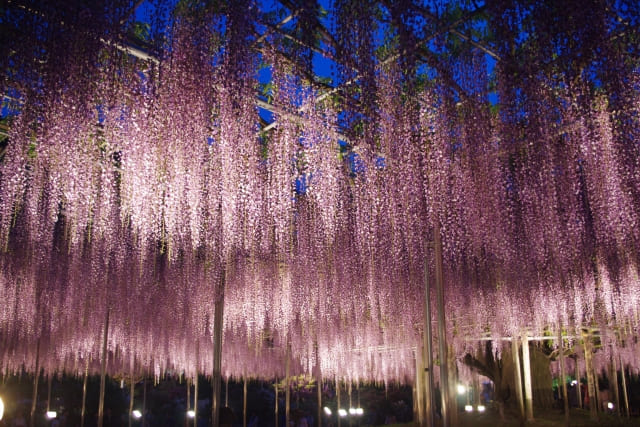
Ashikaga flower park is one of the world’s most famous wisteria destinations!
The park’s massive wisteria trees, especially a 160-year-old giant wisteria, create an unforgettable scene, as if you’re walking through a purple waterfall.
Their spring event, “The Story of Wisteria,” runs from mid-April to mid-May.
2. Byakugouji Temple (Hyogo Prefecture)
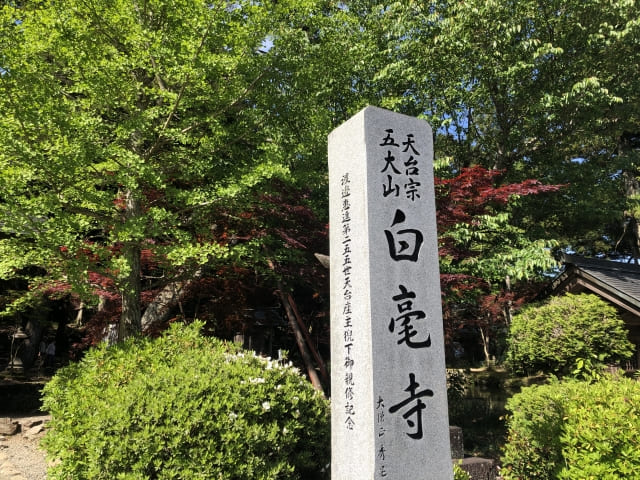
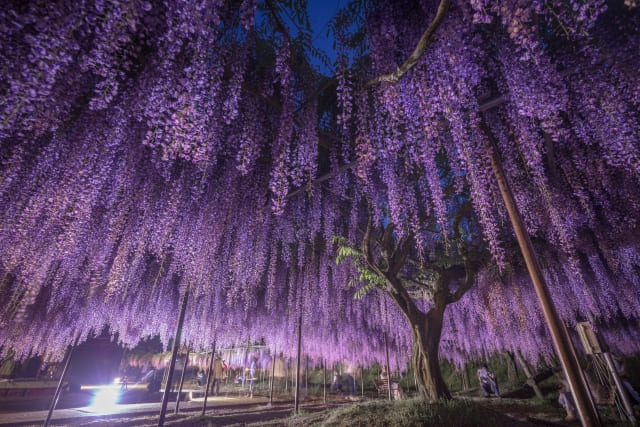
Founded during the Nara period, Byakugouji Temple is a hidden gem for wisteria lovers.
Its famous “Nine-Foot Wisteria” boasts flower clusters nearly one meter (about three feet) long.
The combination of the temple’s ancient atmosphere and the stunning blooms feels like stepping back into the Heian era.
Final thoughts about Wisteria in Japan
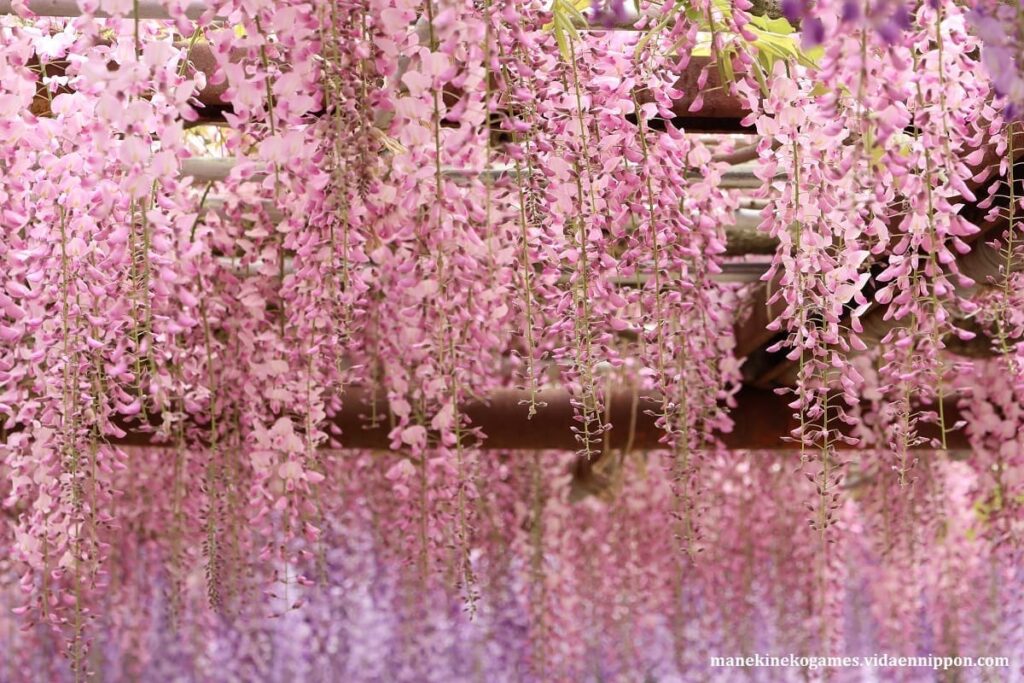
For the Japanese people, wisteria is much more than just a pretty flower.
It represents elegance, nobility, longevity, and spiritual protection, carrying deep cultural meaning that continues to this day.
If you are a fan of Demon Slayer or simply someone who loves flowers, visiting Japan’s wisteria gardens during springtime will be an unforgettable experience.
Make sure to plan your trip for late April to early May — and let yourself be enchanted by the magical beauty of wisteria!
So next time you visit Japan in summer, listen carefully. That soft chime floating through the air might just make the heat a little more bearable—and bring you a moment of peace.

If you are interested in Japanese culture, and you love gaming, you may love these games! Let’s play!

Yes! Let’s play!

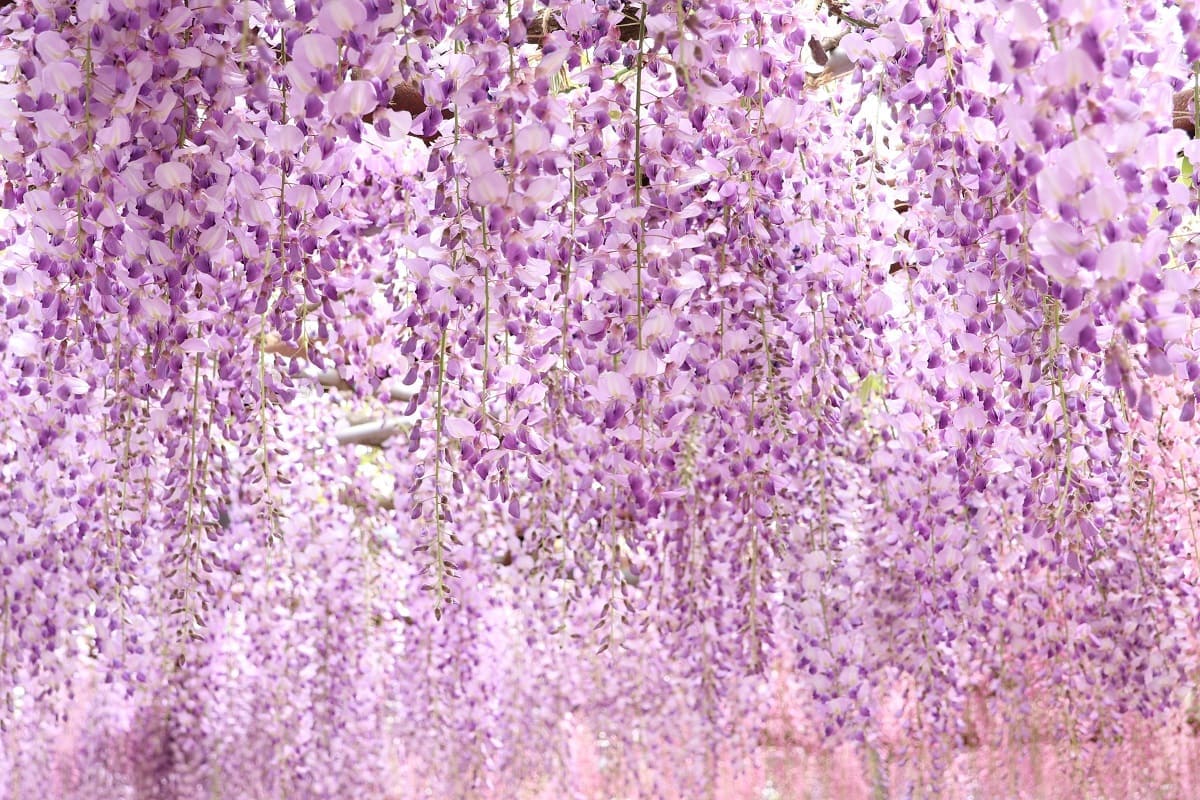


Comments